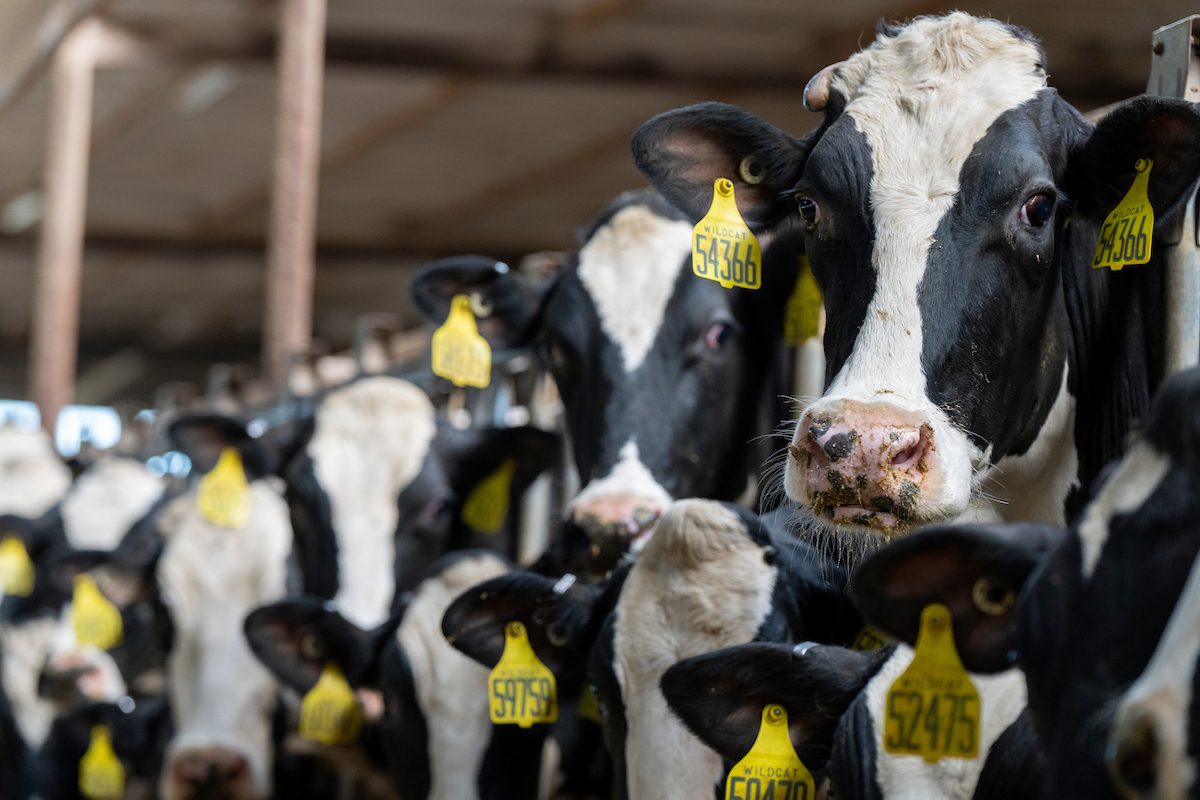Texas dairy producers meet the needs of a growing market

Texas dairies’ production is up amid higher milk and cheese prices, and growth is not expected to slow in 2025, according to Texas A&M AgriLife Extension Service dairy specialists.
Jennifer Spencer, Ph.D., AgriLife Extension dairy specialist and assistant professor in the Texas A&M Department of Animal Science, Stephenville, and Juan Piñeiro, DVM, Ph.D., AgriLife Extension dairy specialist and associate professor, Department of Animal Science, Amarillo, said increased processing capacity in Texas for dairy products is likely to fuel milk production expansion.
Cheese plants opened in Amarillo, Lubbock and southwestern Kansas, receiving Texas milk in 2024. Another Central Texas-based milk processing plant is expected to open in 2026.
In the marketplace
Recent U.S. Department of Agriculture National Agricultural Statistics Service reports indicate that while the number of Texas dairies decreased slightly, the number of cows and production are both on the rise.
There were 294 Texas dairies at the beginning of 2024 compared to 284 commercial dairy farms beginning in 2025.
However, the number of dairy cows grew from 635,000 head in December 2023 to 675,000 in December 2024, according to the January report. The U.S. dairy herd, on the other hand, saw a slight decrease, going from 9.386 million milk cows in 2023 to 9.339 million head in 2024.
Additionally, the pounds of production per cow have gone up, Spencer said.
The Southwest Marketing Area Market Administrator’s Jan. 23 report showed Texas milk production for December rose from 1.38 billion pounds in 2023 to 1.48 billion pounds in 2024. The yearly total for Texas rose from 16.6 billion pounds in 2023 to 17.1 billion pounds in 2024.
The January report indicated the uniform milk price was $20.55 per hundredweight, up from the $18.37 per hundredweight in December 2023. Cheese prices, or Class 3 milk, remained about $2 below the uniform milk price, but they, too, increased – from $16.04 per hundredweight in 2023 to $18.62 per hundredweight in December 2024.
Factors affecting the market
The rise in overall market prices is partially due to inflation, Spencer said. Feed and transportation costs are increasing, pushing the price of milk to keep up.
Another factor affecting the market, Piñeiro said, is the continued increase in the use of beef genetics in the dairy industry, meaning more dairy calves are going into beef production.
“This is resulting in fewer replacement females being available, and we are seeing record prices for replacement heifers,” he said. “Last January, the price of a replacement heifer was about $1,750, and now it is up to $2,600.”
Another factor affecting the industry is the concern about highly pathogenic avian influenza, HPAI, both specialists said.
In 2024, during the early stages of the HPAI outbreak in Texas, some dairies culled lactating cows, and those cows need to be replaced. This could also mean a temporary slowing down of beef-on-dairy use during this process.
Both AgriLife Extension specialists said the industry is waiting to see if HPAI comes back around, with producers trying to be better prepared and more proactive.
PHOTO: Texas dairies are expected to continue to see production growth as new processing plants open across the marketing region. (Michael Miller/Texas A&M AgriLife)



